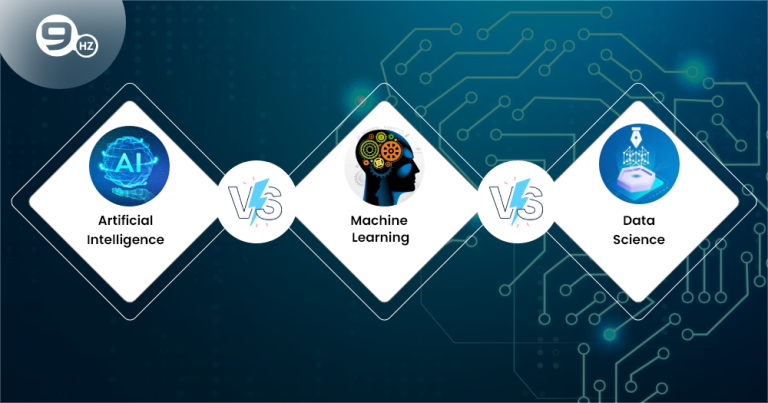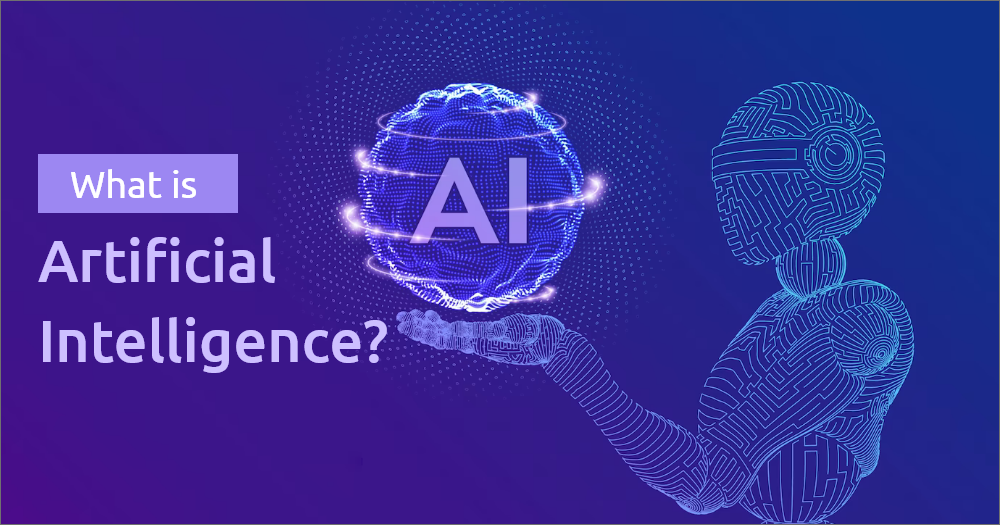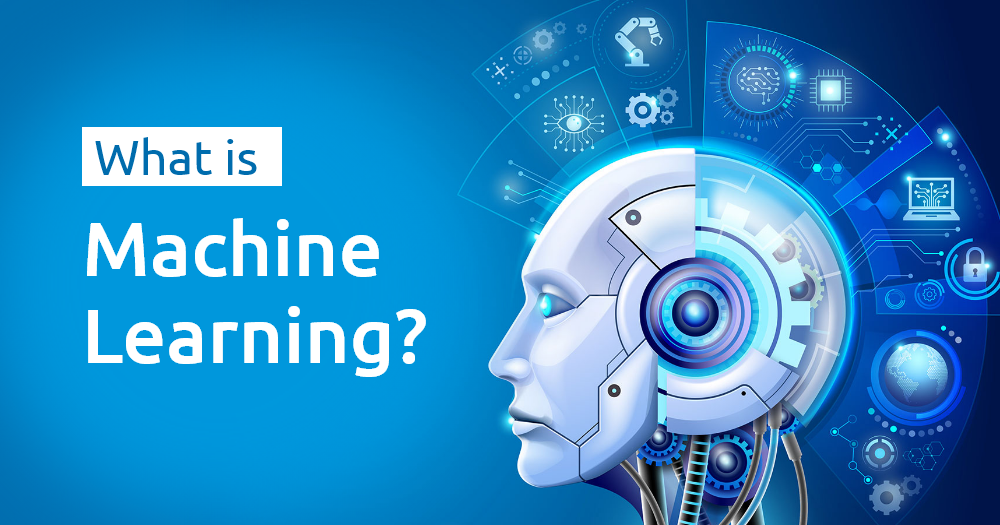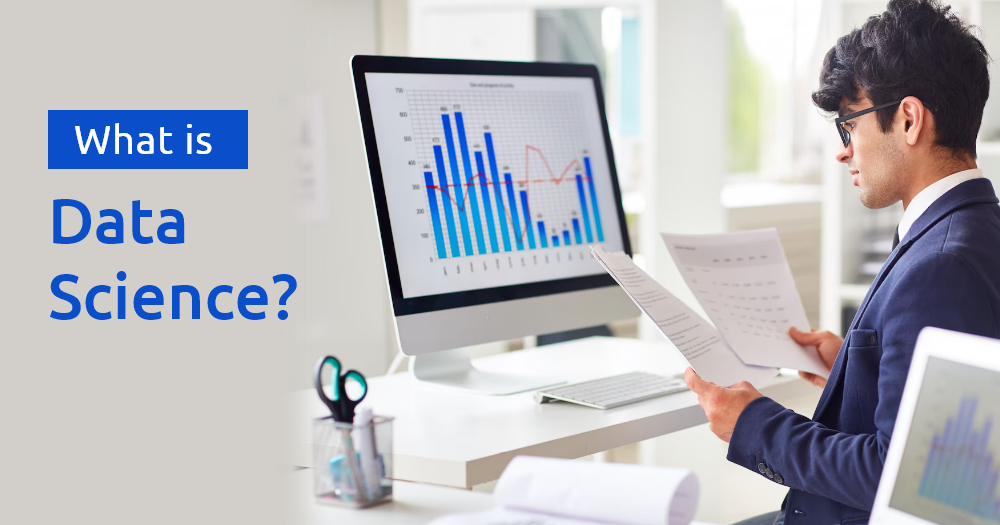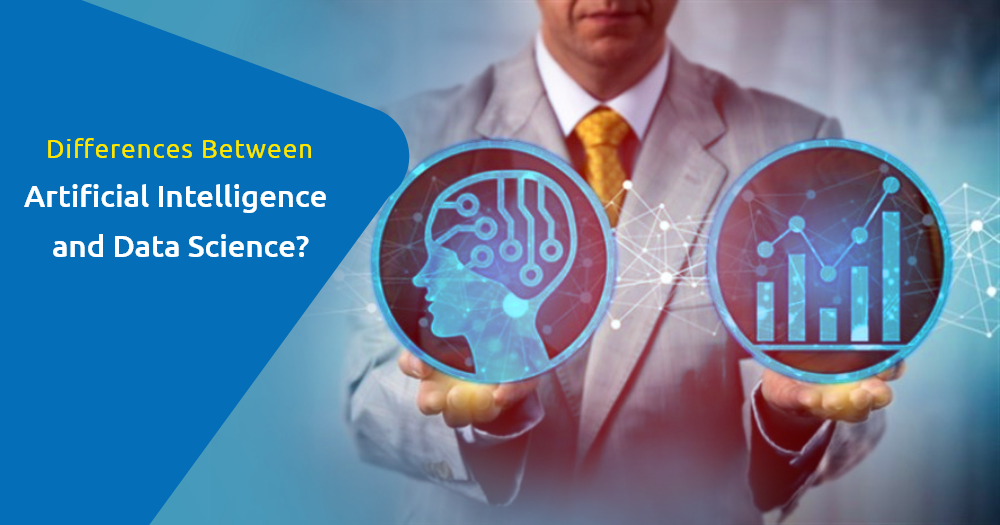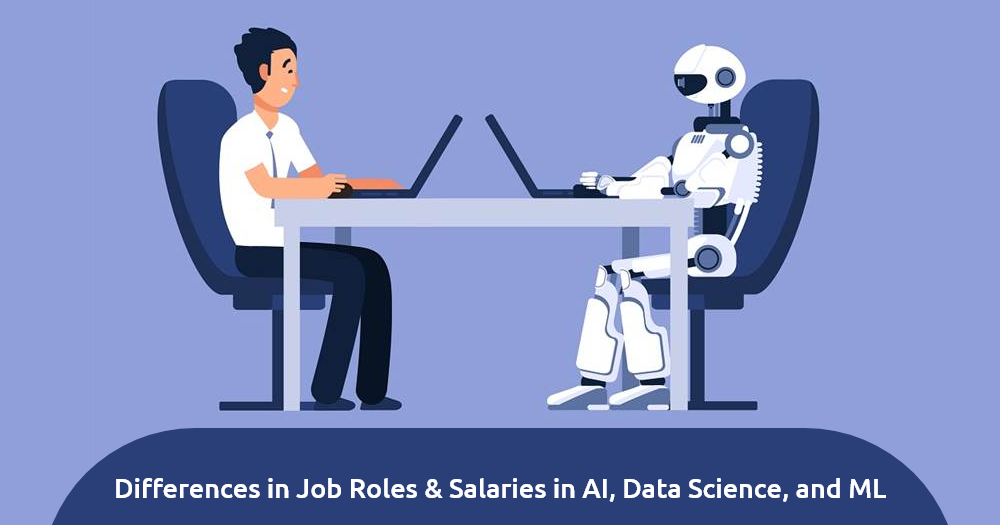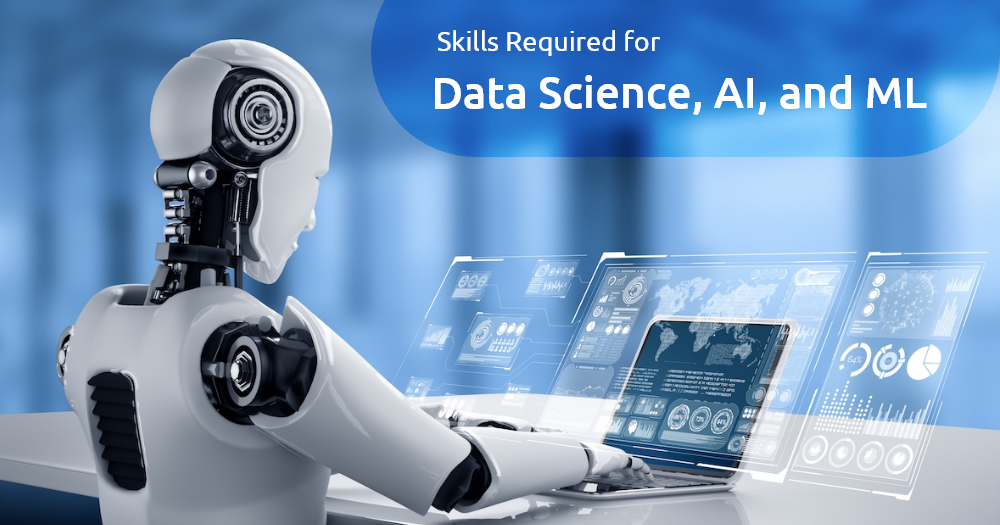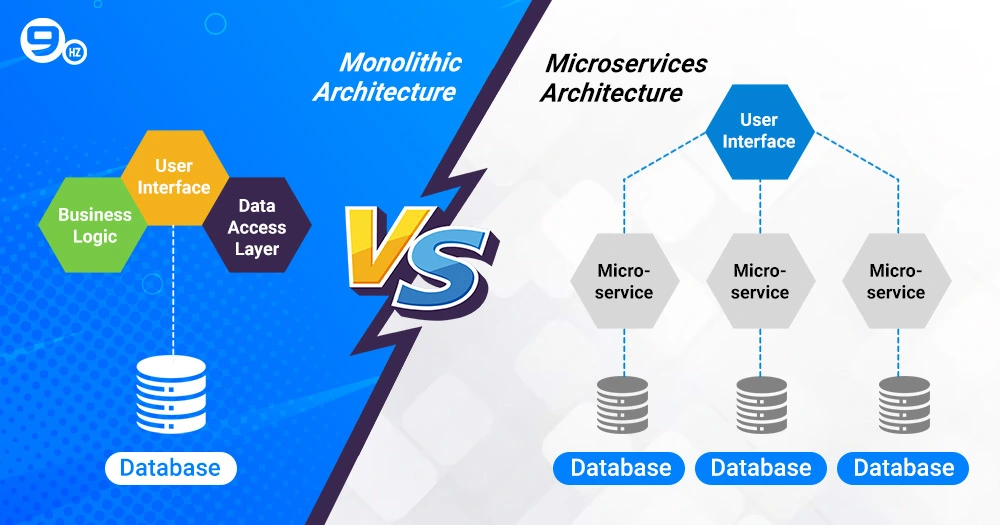Do you often hear artificial intelligence (AI), machine learning, and data science but don’t know what they mean or how are they related? If yes, then worry no more. This blog will walk you through each of these terms separately and also through the major differences between Artificial Intelligence vs Machine Learning vs Data Science. So, without any further ado, let’s dive in.
What is Artificial Intelligence?
AI is a rather frequently used tech term primarily associated with robots and a machine-dominated world. However, in reality, Artificial Intelligence is far more than just that. As AI technology continues to evolve, the use of artificial intelligence (AI) is becoming increasingly widespread across industries. AI Development Company, they are now focusing deeply on AI services to bring change in the future.
In other words, artificial intelligence aims at enabling machines to enforce reasoning by replicating human intelligence. As you probably know, AI processes‘ primary goal is to teach machines from experience. Therefore, passing on the correct information and self-correction is critical. AI experts count on deep learning and human language processing to help machines pin down patterns and inferences. You might be interested to learn how to build an AI application.
-
$50 - $99/hr
-
1999
-
Aventura, FL
-
200+
Mobile App Development
Here are some artificial intelligence (AI) skills one must have if one wants to get into the field:
- Data Analytics
- Machine Learning
- Pattern recognition
- Natural Language Processing
- Neural Networks
- Robotics
- Computer Vision
- Predictive modeling
- Expert systems
What is Machine Learning?
Machine learning is a more specialized area of artificial intelligence, broadly defined as a machine’s capability to impersonate intelligent human behavior. AI systems are usually used to perform complex tasks similar to how humans solve problems. When it comes to finding a reliable machine learning Development Company, there are many options available. However, it is important to find the best one that offers a robust solution to companies in need of scalable and secure machine learning capabilities.
The main objective of AI is to create computer models that exhibit “intelligent behaviors” like humans. This means machines that can understand text, recognize visuals, or even perform an action in the physical world.
As defined by AI pioneer Arthur Samuel in the 1950s, machine learning is “the field of study that gives computers the ability to learn without explicitly being programmed.” It begins with data like numbers, pictures, or text. For example, bank transactions, images, essential confectionery items, repair records, time series data from sensors, or even sales reports.
This data is gathered and readied to use as training data. Therefore, The more data, the better the program. Furthermore, programmers select machine learning models to use, supply the data, and train the computer to find patterns or predict.
Machine learning can be divided into 4 main sub-components or algorithms, which are as follows:
- Supervised: Here, a machine learning engineer uses historical data to understand behavior and draw up future forecasts. A supervised machine learning algorithm analyzes any training data set to draw evidence-based conclusions that can be applied to output values. Specific parameters here are crucial when mapping the input-output pair.
- Unsupervised: This algorithm does not use classified or labeled parameters. It only aims to discover hidden structures from unlabeled data to help systems execute a function correctly. Unsupervised machine learning algorithms can use both generative learning models and a retrieval-based approach.
- Semi-supervised: This model is a combination of the unsupervised and supervised learning elements, yet neither of them exists. It functions using both labeled and unlabeled data to improve accuracy. Semi-supervised learning may be a cost-effective solution at times when labeling data costs more.
- Reinforcement: This ML algorithm doesn’t use any answer key to guide the execution of a function. Thus, the lack of data results in learning from experience. However, the process of trial and error leads to long-term rewards.
What is Data Science?
Data science is the study that deals with huge volumes of data using modern tools and techniques. The aim is to discover new patterns, derive meaningful information, and critical business decision-making.
Data science uses complex ML algorithms to build predictive models. The data used for analysis may come from various sources and in different formats. Data science encompasses multiple disciplines, including data preparation, engineering, data mining, predictive analysis, machine learning, and even data visualization. In addition, it may include statistical analysis, mathematics, and software programming.
Data scientists analyze historical data as per different requirements by applying different formats:
- Predictive Causal Analytics: this model is used to derive business forecasts. It puts forward the outcomes of various business actions that can be measured. It is considered effective for businesses trying to understand the results and future of a new business initiative.
- Prescriptive Analysis: This kind of analysis helps businesses determine their objectives, noting down the actions most likely to succeed. It uses the inferences from the predictive model and suggests businesses the best ways to achieve their goals.
Artificial Intelligence Vs Machine Learning
| Artificial Intelligence | Machine Learning |
|---|---|
| Aims to make an intelligent computer system that functions like humans to solve complex problems. | Machine learning allows machines to learn from provided data to provide accurate output or perform the required actions. |
| Based on capability, you can sort AI into 3 categories: Weak, General, and Strong. | Machine learning can be categorized into Supervised Learning, Unsupervised Learning, and Reinforcement Learning. |
| AI systems focus on maximizing the chances of success. | Machine Learning focuses on accuracy and discovering new patterns. |
| AI enables a machine to imitate human behavior. | Machine Learning is a subset of AI. |
| Artificial intelligence primarily deals with structured, semi-structured, and unstructured data. | ML deals with structured and semi-structured data. |
| Some AI applications are virtual assistants. For example, chatbots, Alexa, Siri, intelligent humanoid robots, etc. | Machine learning applications are search algorithms, recommendation systems, etc. |
Machine Learning Vs Data Science
| Data Science | Machine Learning |
|---|---|
| Conduct operations on various data sources to prove or deny any specific hypothesis. | Build software that learns on its own by understanding the provided data. |
| Use of machine learning tools to work with both structured and unstructured data. | Use of ML algorithms and analytical models. |
| Necessitates data cleaning, acquisition, investigation, etc. | Entails supervised, unsupervised, and semi-supervised learning. |
| Provides reports based on critical data. | Here the output is the machine learning model. |
Data Science Vs Artificial Intelligence
| Data Science | Artificial Intelligence |
|---|---|
| Data Science is a detailed process mainly consisting of pre-processing analysis, visualization, and prediction. | AI is implementing a predictive model for future events and trends. |
| The main objective of data science is identifying the patterns concealed in the data. | Automation of the process and enabling autonomy to the data model are the main goals of AI. |
| Data Science has various types of data, including structured, semi-structured, and unstructured data types. | AI uses standardized data in the form of vectors and embedding’s. |
| Data science has a high degree of scientific processing. | Artificial Intelligence has many high levels of complex processing. |
| The tools used in data science are far more extensive than those used in AI. Why? Because data science entails various procedures for analyzing data and generating insights from it. | The tools used in AI are less extensive compared to data science. |
What Are the Differences Between Artificial Intelligence and Data Science?
The significant difference between data science and AI that you must know are as follows:
- Data science is a process that entails data analytics, preprocessing, data visualization, and future prediction. Contrastingly, AI is the implementation of predictive models to forecast future outcomes.
- Data science comprises several statistical techniques, whereas AI implements computer science algorithms.
- There are so many tools related to data science compared to the ones used in AI. Wondering why? This is because data science involves going through multiple steps to analyze data and derive insights from it.
- Data science is meant to find hidden patterns in data. On the contrary, AI is concerned with giving autonomy to data models.
- Data science helps build models using statistics. Whereas AI creates models that try to act like humans and provide solutions to problems like a human brain would.
- Data science does not need a lot of scientific processing compared to AI.
Data science is used when:
- There is a requirement for statistical insights.
- You need to identify patterns and trends.
- An exploratory data analysis (EDA) is required.
- There is a requirement for fast mathematical processing.
- There’s a need for predictive analytics.
AI is used in the following cases:
- When there’s a need for precision.
- When you need to make quick decisions.
- You need to make logical decisions that do not involve emotions.
- There is the involvement of repetitive tasks.
- For performing risk analysis.
Artificial Intelligence Vs Machine Learning Vs Data Science
| Artificial Intelligence | Machine Learning | Data Science |
|---|---|---|
| Aims to make an intelligent computer system that functions like humans to solve complex problems. | Machine learning allows machines to learn from provided data to provide accurate output or perform the required actions. | Data Science is a detailed process mainly comprising pre-processing analysis, visualization, and prediction. |
| Based on capability, you can sort AI into 3 categories: Weak, General, and Strong. | Machine learning can be categorized into Supervised Learning, Unsupervised Learning, and Reinforcement Learning. | Data Science has various types of data, including structured, semi-structured, and unstructured data types. |
| AI systems focus on maximizing the chances of success. | Machine Learning focuses on accuracy and discovering new patterns. | Data science primarily focuses on identifying the patterns concealed in the data. |
| AI enables a machine to imitate human behavior. | Machine Learning is a subset of AI. | Data science has a high degree of scientific processing. |
| Some AI applications are virtual assistants. For example, chatbots, Alexa, Siri, intelligent humanoid robots, etc. | Machine learning applications are search algorithms, recommendation systems, etc. | Some of the data science applications are in search engines, transport, finance, E-Commerce, health care, and image recognition. |
Data Science VS AI VS ML: Job Roles & Salaries
The role of data scientists is to extract valuable insights from big data. They use various computer programs to gather, clean, analyze, structure, and visualize big data. Sometimes they might have to program algorithms to query data for different purposes.
On the other hand, machine-learning engineers work with data scientists to create scalable machine-learning software. And AI engineers work closely with data scientists to develop adaptable versions of machine learning prototypes.
Job Titles & Salaries in Data Science, AI, and ML
| Data Science Job Titles | Approx. Salaries* |
|---|---|
| Data Scientist | INR 10L to 16L |
| Data Engineer | INR 3L to 22L |
| Data Architect | INR 14L to 40L |
| Chief Data Officer | INR 7L to 40L |
| Machine Learning Job Titles | Approx. Salaries |
| AI/ML Engineering Leader | INR 14L – 16L |
| AI Sr. Consultant | INR 3.4L to 40L |
| AI/ML Solutions Architect | INR 17L to 50L |
| AI Job Titles | Approx. Salaries |
| Robotics Engineer (Computer Vision) | INR 2L to 7L |
| NLP Data Scientist | INR 5L to 52L |
| Bioinformatics Scientist | INR 3L to 50L |
| Sr. Bioinformatics Analyst | INR 3L to 50L |
Data Science VS AI VS ML: Skills Required
In data science vs artificial intelligence (AI) vs (ML) machine learning, the three practices are interdisciplinary and having overlapping foundational computer science skills are necessary. But the techniques, processes, and use cases have a few major differences.
Data Science
Data scientists collect, process, analyze, visualize, and predict based on data. In data science, the primary focus is on creating models that can extract insights from data.
The required skills include:
- Programming
- Data visualization
- Statistics
- Coding
Data scientists use their skills to:
- Optimize logistics
- Identify medical conditions
- Inform city planning
- Fight fraud
- Improve shopping experiences, etc.
Machine Learning
Data scientists working in machine learning enable machines to learn from data and get accurate results. In machine learning, the primary focus is on allowing the machines to efficiently analyze large data sets and make the right decisions with the least possible human intervention.
The required skills include:
- Statistics
- Probability
- Mathematics
- Data Modeling
- Natural Language Processing
Machine learning specialists develop software based on algorithms helpful in:
- Detecting defects in parts
- Improving manufacturing processes
- Supply chain Management
- Streamlining inventory
- Crime prevention, etc.
Artificial Intelligence
Data scientists with a specialization in AI create models that can match or even surpass human intelligence, including learning, reasoning, and self-correction.
The required skills include:
- Statistics
- Programming
- Signal processing
- Model evaluation
AI specialists enable the use of AI-powered personal assistants, entertainment, social apps, and autonomous vehicles. Also, they ensure payment technologies are safe to use.
Conclusion
Now that you’ve read this blog, we’re positive that you have a fair understanding of the differences between Artificial Intelligence vs Machine Learning vs Data Science. Although the three are closely related, they have some significant differences. Also, their skill set requirements also overlap, opening several services and product industries and opportunities for experts in this domain.
FAQs
- What is the Difference between Artificial Intelligence Vs Machine Learning?
- Is Artificial Intelligence just Machine Learning?
- Is Machine Learning and Artificial Intelligence the Same?
- Is Data Science and Machine Learning the Same?
- What Pays More, Data Science or Machine Learning?
- Should I learn Data Science First or Machine Learning?
Artificial Intelligence is the broader theory or concept of machines carrying out tasks in a way that one would consider “smart.” Whereas Machine Learning is an application of AI based on the notion that machines must have access to data and learn themselves.
No, artificial intelligence is not machine learning. ML is an application of AI based on the notion that machines must have access to data and learn themselves.
Although AI and machine learning are closely related, they’re not the same. Machine learning is a subset of AI.
No, data science vs machine learning is not the same. Data science is concerned with studying the data and extracting meaning from it. On the other hand, Machine learning is devoted to understanding and building methods incorporating data to improve performance or make predictions. You can say that ML is a branch of AI.
Comparing the Salary Trends of Machine Learning Engineers and Data Scientists, a Machine Learning Engineer Earns a little more. The average salary of a data scientist is above 8 lakhs per annum, while an artificial intelligence engineer’s salary is approximately 15 lakhs per annum.
Although both concepts are closely related, they have differences. Often the data science skills needed also overlap, but it’s totally up to you where you want to start. But it helps; you need the knowledge of data analytics to get started with Machine Learning.
Great Together!
